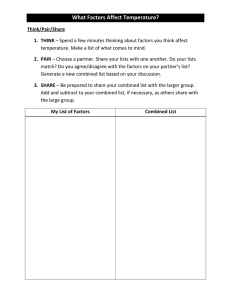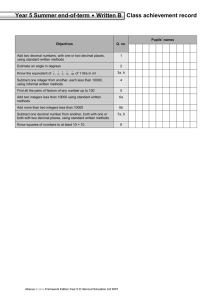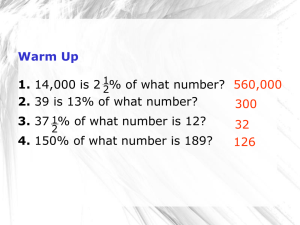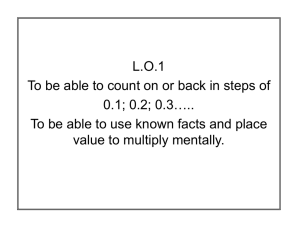When you add two numbers together, you count on from... them by the amount of the other.
advertisement
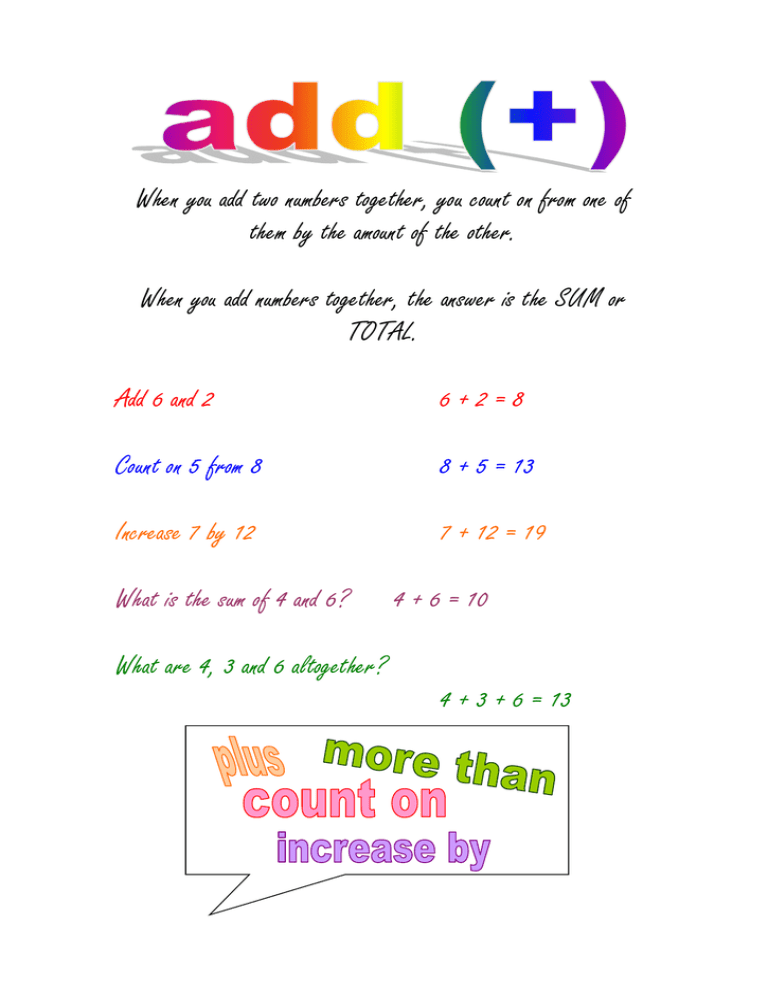
When you add two numbers together, you count on from one of them by the amount of the other. When you add numbers together, the answer is the SUM or TOTAL. Add 6 and 2 6+2=8 Count on 5 from 8 8 + 5 = 13 Increase 7 by 12 7 + 12 = 19 What is the sum of 4 and 6? 4 + 6 = 10 What are 4, 3 and 6 altogether? 4 + 3 + 6 = 13 An approximate number is one that is close enough for the purpose. Knowing that your foot measures roughly 25cms, you can make an approximate measurement of the width of the room by multiplying the number of foot lengths by 25cms. We can use rounding up or down when we are approximating 39 metres is approximately 40 metres 6 x 9 is approximately 6 x 10 = 40 3.6 + 8.2 is approximately 4 + 8 = 12 You can make it easier to use numbers if you work out what should be added or taken away to bring you to a 10 or a multiple of 10. Then add or subtract the other number separately. 6+7 = 6+4+3 = 10+3 6 23-9 10 = 23-3-6 23 13 = 20-6 20 49+32 = 49+1+31 49 50 5.6+3.5 =5.6+0.4+3.1 5.6 6.0 =13 =14 14 =50+31 =81 81 =6.0+3.1 =9.1 9.1 This is a way of adding or subtracting numbers when one of them ends in 1 or 2 or 8 or 9. Take the number that ends in 1, 2 8 or 9 and change it to the nearest 10 or multiple of 10. If you add a number at the start then you must subtract it at the end. If you subtract a number at the start then you must add it at the end. 34 + 9 = 34 + 10 – 1 = 44 – 1 34 70-8 70 = 43 43 44 = 70-10+2 = 60+2 62 = 62 60 A decimal is a way of measuring less than 1. It is a fraction in which a dot, called a decimal point, is followed by numbers representing tenths, hundredths and thousandths.
